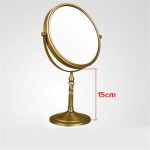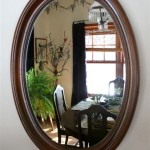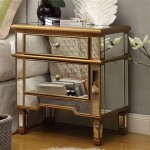Standard Mirror Sizes
Navigating the world of mirrors can be surprisingly complex, especially when considering the wide array of sizes available. Understanding standard mirror dimensions can simplify the selection process, whether for a bathroom vanity, a full-length dressing mirror, or a decorative wall piece. This article explores common standard mirror sizes, factors influencing size choices, and typical applications for different dimensions.
While the term "standard" can be loosely applied, certain dimensions appear more frequently in commercially available mirrors. These sizes often reflect manufacturing efficiencies and common bathroom vanity dimensions. For rectangular bathroom mirrors, common widths range from 24 inches to 48 inches, increasing in increments of 2 to 4 inches. Common heights for bathroom mirrors range from 24 inches to 36 inches, often matching the height of the backsplash.
Full-length mirrors, essential for checking one's overall appearance, also adhere to some common sizing conventions. Widths typically range from 20 inches to 36 inches, allowing for a full view of the body. Heights usually start at 60 inches and can go up to 72 inches or more, accommodating individuals of varying heights.
Beyond these broad categories, several specific dimensions frequently appear in retail settings. A 24-inch by 36-inch mirror is a popular choice for smaller bathrooms or powder rooms. A 30-inch by 40-inch mirror is often suitable for standard-sized vanities. Larger vanities might utilize a 36-inch by 48-inch mirror or even a double vanity mirror setup with two smaller mirrors.
For full-length mirrors, a 24-inch by 60-inch size provides a good balance between width and height for many individuals. A 30-inch by 72-inch mirror offers a more expansive view and accommodates taller individuals. Larger full-length mirrors, such as 36-inch by 72-inch or even larger, are also available for those desiring a more comprehensive view or for use in commercial settings like dance studios or clothing stores.
Beyond rectangular shapes, round and oval mirrors also exhibit some standard sizing conventions. Round mirrors are often measured by diameter, with common sizes ranging from 12 inches to 48 inches, increasing in increments of 6 inches. Oval mirrors typically follow a similar pattern, with the longest dimension (length or height) determining the approximate size.
Several factors influence the appropriate mirror size for a given space. The size of the room plays a significant role. A large mirror in a small room can make the space feel cramped, while a small mirror in a large room might appear lost. The size of the furniture or fixtures with which the mirror is associated is also important. A bathroom mirror should generally be proportionate to the vanity size.
The intended function of the mirror also influences size selection. A small decorative mirror might suffice for a hallway, while a larger mirror is necessary for tasks requiring a full view, such as applying makeup or dressing. Aesthetic considerations also play a role. A large mirror can create a sense of spaciousness, while a smaller, more ornate mirror can serve as a decorative accent.
Installation methods can also influence size selection. Large, heavy mirrors might require specialized mounting hardware and professional installation. Smaller, lighter mirrors are often easier to install with standard hanging hardware. The available wall space also dictates the maximum size of the mirror that can be accommodated.
Specific applications influence typical mirror sizes. Bathroom vanities often utilize rectangular mirrors between 24 and 48 inches wide and 24 to 36 inches high. Full-length dressing mirrors typically range from 20 to 36 inches wide and 60 to 72 inches or more in height. Decorative mirrors come in a wide range of sizes and shapes, from small accent mirrors to large statement pieces.
Over-the-door mirrors provide a full-length view without requiring wall space and often measure around 14 inches wide by 48 inches high. These mirrors offer a practical solution for smaller spaces. Vanity mirrors designed for makeup application are often smaller and may include magnification features. These mirrors can be freestanding or wall-mounted and prioritize functionality over overall size.
Choosing the appropriate mirror size requires careful consideration of various factors. Understanding standard sizes and their typical applications can simplify the selection process. By considering the size of the room, the function of the mirror, and aesthetic preferences, individuals can select the perfect mirror to enhance their space.

Bathroom Mirror Size Calculator

How To Measure Your Space For A Large Wall Mirror 2 Steps

Bathroom Mirror Size Calculator Vanity Sizes Double Rectangular

Joseph Miles Classica 600mm Wide Standard Mirror

Bathroom Mirror Size Calculator

Laser Cut 4u C U In Me Mirrors

Ello Allo 30 In W X 36 H Rectangular Aluminum Framed Wall Mount Bathroom Vanity Mirror Gold Evm S Fg30 The Home Depot

Hinoki Wood Floor Mirror Minimalist Standing The Citizenry

Framed Mirror Riho

Florian Bathroom Mirror Urban Ladder








